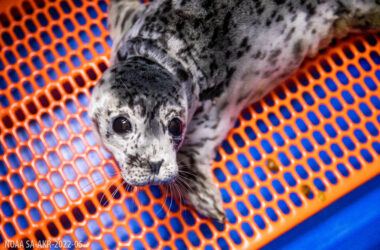The Centers for Disease Control and Prevention (CDC) shows that there has been a surge of syphilis cases in Alaska, and those infections are on the rise.
The state had been accounted for 424 syphilis cases in 2022, with 12 infants being born with congenital syphilis in the Anchorage/Mat-Su area.
Syphilis is a sexually transmitted disease that gets transmitted from person to person, and it can cause anything from no symptoms to painless lesions, typically near the site of infection. What makes finding this disease so difficult is that it’s a great mimicker, so it can look like a lot of other diseases.
According to Dr. Anne Zink, Alaska’s Chief Medical Officer, it’s common for people to not know they are infected, so the disease can last for a long time, making it that much more dangerous.
“And then if it’s not treated, it can go to the bloodstream and make its way around and it can cause a diffuse rash that can look like lots of other things. And if it stays even longer, it can cause brain problems, heart problems, liver problems, problems with your aorta, the major vessel that takes blood off your heart, and if you’re pregnant, it can cause significant abnormalities for your child as well as being at higher risk for miscarriage,” said Zink.
To address this rapid increase, Zink says that the CDC recommends that all reproductive age people between the ages of 15 and 44 should get tested for syphilis, particularly if they change partners.
As previously mentioned, the disease can be extremely dangerous for pregnant mothers. But on a positive note, if the disease is caught early, it can be easily treated.
“The current recommendations or the is it someone who’s pregnant gets tested three times during our pregnancy. So first, right at the very beginning of pregnancy when they get that first kind of set of labs, a second one in that second trimester and a third one right prior to the delivery. And if someone is tested early for syphilis early in that pregnancy, they can just get a shot of penicillin. So, it’s a one-time shot of a medication that is safe in pregnancy, and that significantly reduces the risk that their child has significant exposure or consequences to syphilis,” says Zink.
While there are some tests and forms of protection, Zink says that there are three ways to help stop the spread of the disease.
The first form is protection during intercourse, the second is testing, and the third is treatment.
“So just knowing that the more exposures you have to more different people, the higher the risk you are, so people’s choices that they make with their sexual behavior can put people at higher or lower risk. Having those open honest conversations with your partner can also be helpful. Testing before getting a new partner can also really help to reduce your risk associated with getting syphilis, and then testing when you get a new partner so that if you change partners, you are able to just make sure that you didn’t pick up something else in the meantime. So those are all ways that you can help prevent it,” says Zink.






